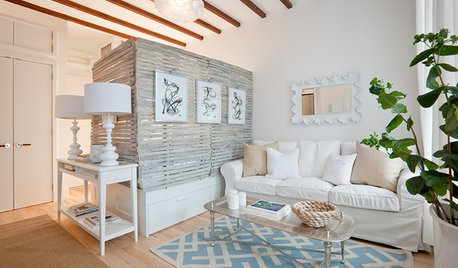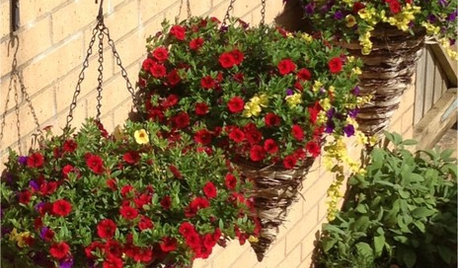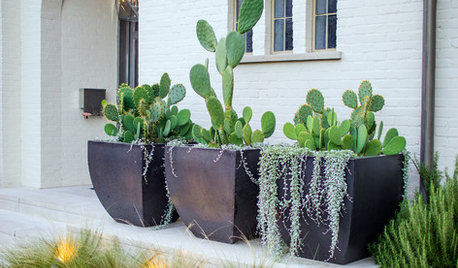Balance Between Water Retention and Drainage for Container Mix
yumtomatoes
12 years ago
Related Stories

FARM YOUR YARDHow to Grow Vegetables in Containers
Get glorious vegetables and fruits on your patio with a pro’s guidance — including his personal recipe for potting mix
Full Story
CONTAINER GARDENSContainer Gardening Basics: The Dirt on Soil
Learn the types of potting soil available and the best mixes to help your containers thrive
Full Story
SMALL HOMESHouzz Tour: Artistic Balance for a Brooklyn Studio
Opposite textures and finishes combine to give a 400-square-foot apartment depth and character
Full Story
GARDENING GUIDESGreat Design Plant: Anemone Canadensis Adds Pizzazz to Water’s Edges
Plant Canadian anemone along pond, lake or stream edges for a splash of white flowers in late spring
Full Story
PLANTING IDEASStretch the Budget, Seasons and Style: Add Conifers to Your Containers
Small, low-maintenance conifers are a boon for mixed containers — and you can transplant them to your garden when they’ve outgrown the pot
Full Story
LANDSCAPE DESIGNHow to Move Water Through Your Landscape
Swales, underground pipes or a mix of both: There’s more than one way to distribute water in the garden
Full Story
CURB APPEALCrazy for Colorful Cones: 5 Container Plantings Beyond the Bowl
Give even a small garden an exuberant vibe with hanging cones overflowing with blooming beauties
Full Story
TASTEMAKERSA New Decorating Book Celebrates Expert Style Mixing
Old-world classic, traditional and modern elements harmonize in Stephen Sills' gift-worthy new decorating book
Full Story
HOUSEPLANTSBaby Tears Mimics Moss for a Green Accent Indoors
This adaptable spreader thrives in water or soil, making it a terrific addition to containers and living walls
Full Story
CONTAINER GARDENSCactus and Succulent Containers Are Ideal for Hot, Sunny Spots
Bring on the sun with these heat-loving succulent container gardens
Full StoryMore Discussions







bigpinks
calistoga_al ca 15 usda 9
Related Professionals
Windham Landscape Architects & Landscape Designers · Byram Landscape Contractors · Indio Landscape Contractors · Kettering Landscape Contractors · Medford Landscape Contractors · Riverhead Landscape Contractors · Thornton Landscape Contractors · Hueytown Landscape Contractors · Enumclaw Window Contractors · Godfrey Window Contractors · Lemont Window Contractors · Matteson Window Contractors · Sebring Window Contractors · Agoura Hills Fence Contractors · Waunakee Fence ContractorsyumtomatoesOriginal Author
greenman28 NorCal 7b/8a
emgardener
tapla (mid-Michigan, USDA z5b-6a)
tomncath
Joe1980
greenman28 NorCal 7b/8a
margo_k
Joe1980
tapla (mid-Michigan, USDA z5b-6a)
capoman
yumtomatoesOriginal Author